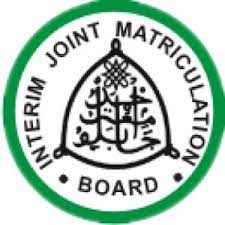Biology Past Questions v23 For JAMB/WAEC/NECO Students; These Biology past questions are for students who are sitting for the following examinations:
HAVE YOU USED OUR JAMB TOOL YET? IT PROVIDES YOUR JAMB COMBINATION FOR FREE
- JAMB
- Post-UTME / Post-JAMB
- WAEC
- NECO
- WAEC GCE
- NECO GCE
- NABTEB
- NABTEB GCE
#1. The ability of an organism to live successfully in an environment is known as
#2. The most important adaptation of xerophytes is the ability of the protoplasm to
#3. A green snake in green grass is able to escape notice from predators because of its
#4. For heterotrophic organisms, competition is least caused by the inadequacy of
#5. A tall plants crossed with a dwarf one produces offspring of which half are tall and half are dwarf. What are the genotypes of the parents?
#6. In man, the ability to roll the tongue is a variation classified as
#7. Darwin is considered the first scientist who correctly explained the theory of
#8. The stem of a typical aqautic plant usually has many
#9. The role of the male adult honey bee is to
#10. The distribution of plants in a rain forest is governed mainly by
#11. Both recessive and dominant characters are found
#12. The probability of a baby being a boy or a girl depends on the contribution of the
#13. Which of the following statements is true of blood groups and blood transfusion?
#14. Which of the following is likely to encourage inbreeding in plants?
#15. The highest percentage of energy in an ecosystem occurs at the level of the
#16. The greatest influence on a stable ecosystem in nature is exerted by
#17. The physical space occupied by an organism together with its functional role in community can be described as
#18. A freshwater pond may contain
#19. The hygrometer is used for measuring
#20. Salts and water are absorbed in the roots and transported to leaves by
#21. Salts and water are absorbed in the roots and transported to leaves by
#22. The number of plants species obtained from a population study of a garden is as follows: Guinea grass (15), Ipomea spp (5), sida spp (7) and Imperata spp (23). What is the percentage of occurrence of Imperata spp?
#23. Carbon (IV) oxide content of the atmosphere is least affected by
#24. The factor that least affects food shortages in sub-saharan Africa is
#25. The epiphytic habitat can best be described as
#26. The parts which function together to bring about hearing are labelled
#27. The part labelled II is the
#28. When specimen X is mixed with few drops of iodine solution, the appearance of a blue-black colour confirms that X is
#29. The structure above represents a
#30. Blood vessels usually pass through the structure labelled
#31. A seedling grown in the dark is likely to be
#32. Most monocots are easily recognized by their
#33. Water fleas, wood lice and barnacles belong to the group
#34. The mode of feeding in Amoeba and Hydra is
#35. Which of the following organisms does not exist as a single free living cell?
#36. An association between the root nodule of a leguminous plant and rhizobium sp, is known as
#37. Amphibian are normally found
#38. Viviparity occurs mainly in the
#39. The jointed structure in insects that bears organs which are sensitive to touch, smell and vibration is the
#40. The character that expresses itself in the presence of the contrasting characters
#41. Fresh milk is often kept in refrigerated vehicles, for distribution to customers in order to
Finish















